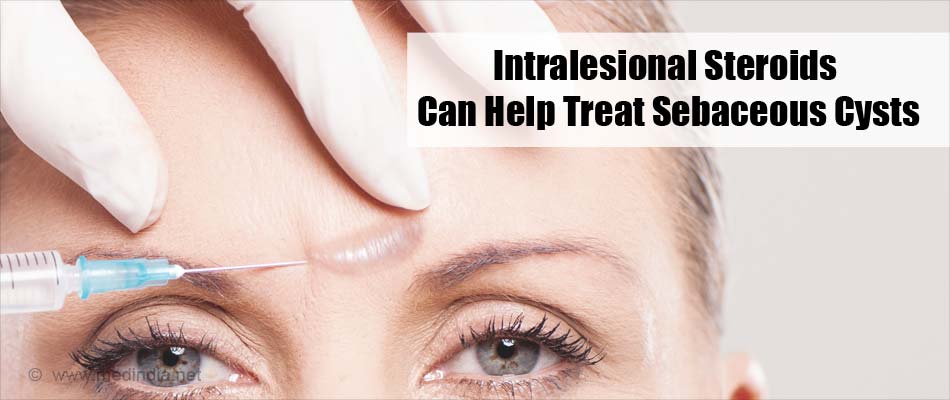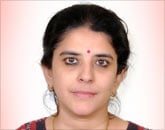What Is A Skin Cyst
What is Pare Cyst?
Skin cyst is a sac like lesion situated below the skin which is filled with fluid or pus and other secretions, and enclosed past a cyst wall.
Structure of Pare - In Brief
The peel is made upwards of two layers, an outer layer called the epidermis, and an inner dermis that makes up 95 percentage of the skin. The epidermis is lined by flat cells (squamous epithelium) or keratinocytes arranged in five layers. The epidermal keratinocytes secrete a poly peptide called keratin that gives the skin its distinctive resilience and texture. The epidermis and the dermis come across at the dermo-epidermal junction. The dermis consists of 2 layers, an outer papillary layer that contains blood vessels, nerves and lymphatics and a deeper reticular layer equanimous of coarse collagen fibers.
Both the epidermis and the dermis comprise accompaniment skin structures namely the hair follicles, sweat glands and the sebaceous (oil producing) glands. These accessory structures are lined by keratinocytes in their ducts.
What are the Types of Pare Cysts?
The post-obit are a few types of epidermoid cysts or skin cysts.
a. Sebaceous cyst: The sebaceous glands within the pare is the site of origin.
b. Pilar cyst: The sebaceous glands with hair follicle is the site of origin. They are mutual on the scalp. The cyst on the scalp and head are mostly pilar cysts. These may exist multiple.
c. Meibomian Cyst: It is known as a chalazion. It is a cyst due to the involvement of the meibomian glands of the eyelid.
d. Acne Cyst: Acne can present with black heads, white heads, oily skin, pimples, cysts and scars. Acne tin can cause facial cysts although any office of the body can be involved.
What are the Risk Factors for Development of Skin Cysts?
Although any one can develop skin cysts, the following factors increment the chances of developing cysts
- Mail-pubertal age
- Skin injury or irritation
- Certain rare genetic disorders
What are the Causes of Pare Cyst?
Skin cysts are also referred to equally epidermoid cysts. They occur when there is an excess growth of epidermal cells (keratinocytes). The various reasons for this include:
- Apoplexy of ducts of hair follicles and sebaceous glands in the skin (the most mutual cause)
- Penetrating injury that causes epidermal cells to move deeper into the dermis
- Trapping of epidermal cells (keratinocytes) along embryonal fusion lines
The cause and content of the skin cyst depends on the type of the cyst:
The epidermal cells multiply and form a sac like construction lined by flattened pare epithelium. These lining epidermal cells secrete keratin, into the center of the cyst. Other contents of the cyst depending on the cause include expressionless peel and pilus, sebum, and infected cyst that may contain pus and bacteria.
- Pilo-sebaceous cysts form due to the blockage of the skin glands or the hair follicle swelling. Peel trauma and genetics also play a role in the sebaceous cyst formation. They affect the hairy areas of the body.
- Meibomian Cyst: Chronic inflammation and blockage of the meibomian gland of the centre lid cause the meibomian cyst.
- Acne cysts are common during puberty among both males and females when in that location is increased secretion of oily sebum from the sebaceous glands. Genetics, stress, infections, hygiene, food, hormones and environmental factors play a function in the occurrence of acne. Acne cyst is a large, painful and pus filled lesion which can happen due to bottleneck of the skin pores with dead skin, bacteria or oil deeper in the skin.
What are the Symptoms of Pare Cyst?
- The skin cyst is a lump below the peel. The skin cysts are usually benign, slow-growing and painless.
- The sebaceous cysts are usually beneath the skin and they tin involve the skin of whatsoever body part except the palms and soles. They are usually keratin cysts. They have a central black punctum.
- The chalazion is an eyelid lump which is due to the result of an infection which blocks the meibomian gland of the eye that secretes an oily substance. Information technology usually subsides in 2-4 months, if it does non subside then surgical removal is the pick.
- In patients with severe acne, the nodulocystic lesions are present. These lesions can be scarlet and painful. Information technology will exist usually associated with pimples and scars on the skin.
What are the Complications of Skin Cysts?
If untreated, epidermoid cysts tin undergo certain complications including the following:
- Inflammation � the cyst becomes red, bloated and painful in the absence of infection
- Infection � Bacterial infection of the cyst results in pus formation, which may then accept to be drained
- Rupture of the cyst
- Skin cancer � Rarely skin cysts are associated with skin cancer
How do you Diagnose Skin Cyst?
- Taking the history of the illness from the patient is of import.
- General patient test and examination of the lesion helps in making the diagnosis.
- Sometimes a biopsy may be required to dominion out other major pare growths. Biopsy is a procedure where a pocket-size portion of the cyst is removed and examined under the microscope.
How exercise you Care for Skin Cyst?
- Pocket-sized skin cysts which are small and painless can be left untreated.
- Sebaceous cyst treatment:
- Small sebaceous cysts can be treated with intralesional steroids.

- Large, infected or ruptured sebaceous cysts require a surgical excision.
- Meibomian cyst/ Chalazion: During the initial phase topical antibiotics and warm compress tin can help to resolve the chalazion. Intralesional steroid can exist an option if it is resistant to initial handling. If the cyst is firm and if it does not resolve, it requires a surgical removal.
- Cystic acne handling: Oral contraceptive pills may exist used to maintain hormonal balance. Topical and oral antibiotics and retinoids, intralesional steroids and photodynamic therapy are useful.
How do yous Prevent Skin Cysts?
- To forestall the recurrence of the meibomian cyst, forbid the meibomian glands from blocking. Clean the heart lids with cotton and warm h2o. It is important to make clean the scales (if nowadays) from the edge of the lower heart hat with the moist cotton bud. Once the eye hat seems clean without any scales you may stop the procedure. A healthy and balanced diet including green leafy vegetables and omega three fatty acids is important.
- To prevent the cystic acne it is essential to eat a healthy nutrition rich in niacin, vitamin E, low glycemic index and fiber rich foods.
- Direction of stress is essential; a practiced slumber and adequate practice are as important.
- Practise not squeeze or irritate any skin cyst to prevent further complications because it can lead to the rupture and infection of the cyst.

References:
- Sebaceous Cysts - (https://my.clevelandclinic.org/health/articles/sebaceous-cysts)
- Trichilemmal cyst - (https://en.wikipedia.org/wiki/Trichilemmal_cyst)
- Eyelid lumps - (http://www.goodhopeeyeclinic.org.uk/lidlumps.htm)
- Epidermoid cyst - (https://en.wikipedia.org/wiki/Epidermoid_cyst)
- Sebaceous cyst - (https://en.wikipedia.org/wiki/Sebaceous_cyst)
Latest Publications and Research on Peel Cyst
Exercise you wish to consult a Dermatologist for your problem? Ask your question
Source: https://www.medindia.net/patientinfo/skin-cyst.htm
Posted by: forsheeclinter.blogspot.com



0 Response to "What Is A Skin Cyst"
Post a Comment